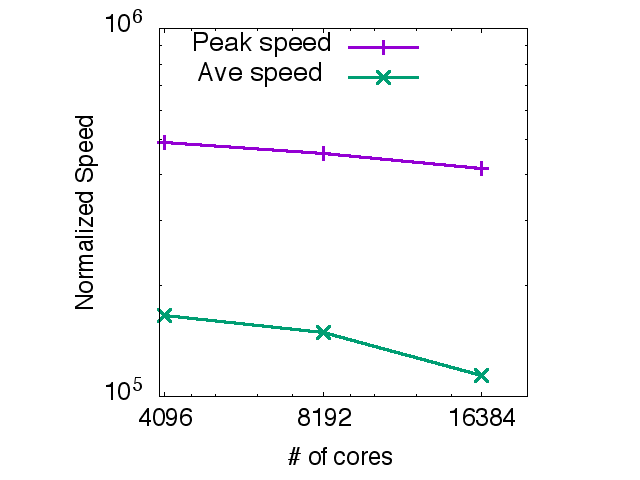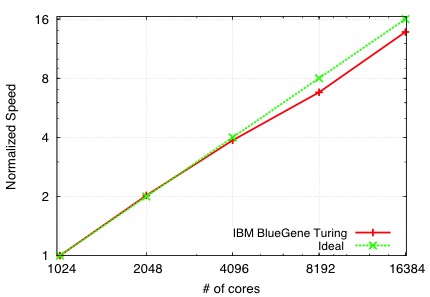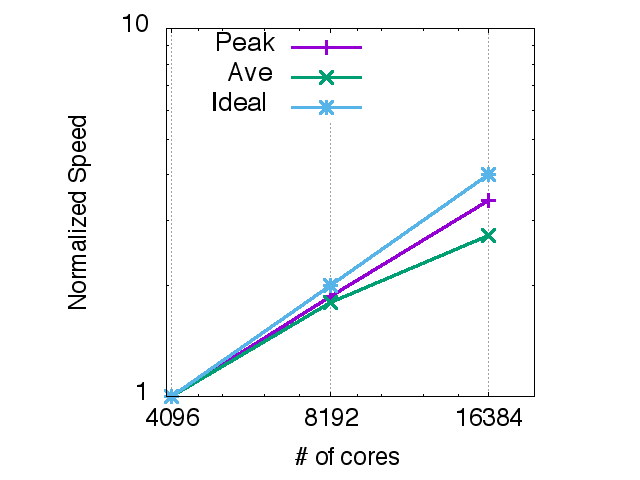
PARIS has the following features:
- Free code under the GPL.
- Written in Fortran 90/95/2003
- Use a regular structured grid and finite volume discretisation.
- Uses MPI and a regular array of subdomains for parallelisation.
- Momentum : QUICK, ENO, Superbee, Verstappen either with a velocity or a momentum-conserving formulation.
- Implicit viscous terms.
- Either Volume-Of-Fluid or Front-Tracking may be used to follow interfaces.
- VOF uses either CIAM or Weymouth-Yue scheme for advection.
- Height-Function method for curvature estimation and surface tension.
- Parallelized Lagrangian Point Particles (LPP) with VOF to LPP and LPP to VOF conversion
- Second order in time and space with projection method.
- Uses either hypre or internal Poisson solver.
- Immersed solid boundaries
- Has either Interfaces or Free surfaces
- Thermal effects (energy equation).

Speed of Paris Simulator in numbers of cells/core/second compared to OpenFoam and Gerris on a porous medium invasion problem. Results obtained on the supercomputer Rostand (Intel six-core X5660 Westmere at 2.8 GHz) from Total's CSTJF in Pau, France on the porous medium invasion problem. From reference Arrufat et al. 2014

Speed of Paris Simulator in numbers of cells/core/second compared on the Tier0 supercomputer CURIE from the TGCC (Intel Sandy Bridge E5-2680 at 2.7 GHz). Configuration close to that of Ling et al 2015b. Simulation on 4096 x 2048 x 2048 = 17 Billion cells for 20 steps. The HYPRE-PFMG solver is used and a first-order integration in time is performed.

Ideal and actual parallel speedup for ParisSimulator on the BG/Q machine Turing at IDRIS.

Peak and average speed up for ParisSimulator on CURIE at TGCC. Configuration close to that of Ling et al 2015b. Simulation on 4096 x 2048 x 2048 = 17 Billion cells for 20 steps. The HYPRE-PFMG solver is used and a first-order integration in time is performed.